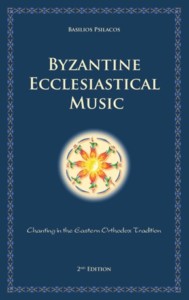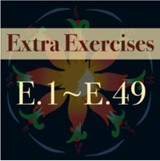Byzantine Ecclesiastical Music

The new and enriched second edition of Byzantine Ecclesiastical Music: Chanting in the Eastern Orthodox Tradition (2020) authored by Basilios Psilacos, chanter and Lecturer at St Andrew’s Greek Orthodox Theological College, comes as a welcome addition to the teaching of Byzantine Chant in the English speaking world.
Indeed, it is the first textbook of Byzantine music to be produced and published in Australia. Also, the first edition has been used as a textbook in other jurisdictions and settings, for example in the United States of America by the Holy Cross Theological Seminary, St Raphael School, and others.
These are not its only points of merit. The author is himself a product of the Greek Orthodox Diaspora, Australian-born but educated in Byzantine Music by eminent teachers in both Australia and Greece. This unique blend means that the textbook masterfully adapts musical concepts and subjects, originally available in difficult specialised Greek, for prospective students who are most comfortable in the English language.
An additional advantage of the book which must also be noted and commended, is that it provides a balanced mix of theory and practical exercises within one package, something which was not always available, even for students using textbooks written originally in Greek. In fact, many experienced chanters will remember learning their Byzantine Music notation through the ubiquitous thin yellow coloured textbook by the Byzantine Music educator of memory, Ioannis Margaziotis. Some exercises in the present textbook are sourced from that book.
Whilst eminently accessible, such books were very light on the theory of Byzantine Music and one had to either rely on their teacher being able to fill the void in theoretical knowledge, or purchase a bespoke Byzantine Music theory written in a dry, academic Greek that sounded like something written in the 19th century, which some were.
Mr Psilacos used a traditional approach in authoring this book, by carefully consulting material from over twenty Byzantine Music theory and practical books published over a span of two centuries, including even the handwritten notes of his own teacher. He has produced a work that is balanced, accessible and pleasant to read. Not only does the present textbook supply a manageable mix of theory and practical exercises, but it does so in idiomatic English. This is certainly a rare combination that makes both the teaching and learning of Byzantine Chant a much more pleasant experience.
The second edition comes with an additional 50 practical exercises, all of which are now supplemented by freely available recordings by the author (see

https://soundcloud.com/psilacos).
Frequent references are made to the need for a teacher. Byzantine Chant was always passed on from mouth to ear. Like any practical art, it cannot be learnt from a text alone.
However, as a teaching aide, a textbook, and a reference book, this book admirably fills a void in the dissemination and education of Byzantine Church Music within the English-speaking Orthodox world.
Source: Lychnos October 2021 / November 2021
